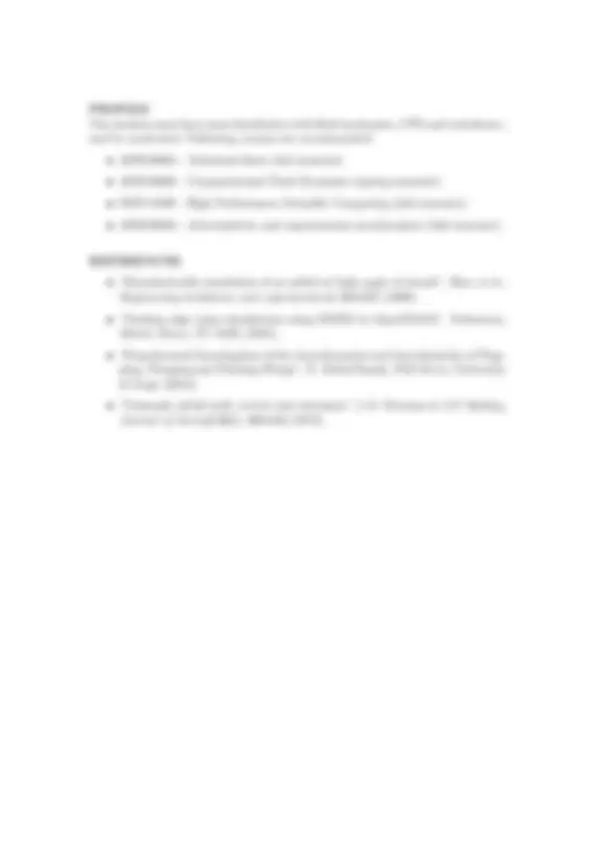



Study with the several resources on Docsity

Earn points by helping other students or get them with a premium plan


Prepare for your exams
Study with the several resources on Docsity

Earn points to download
Earn points by helping other students or get them with a premium plan
Community
Ask the community for help and clear up your study doubts
Discover the best universities in your country according to Docsity users
Free resources
Download our free guides on studying techniques, anxiety management strategies, and thesis advice from Docsity tutors
This master thesis document from the university of liege (ulg) outlines a research project focused on fluid-structure interaction (fsi) simulations of separated flows using detached eddy simulations (des). The project aims to analyze the behavior of an airfoil or flat plate under incompressible flows with one or two degrees of freedom, such as pitching or plunging. The research will involve performing a literature survey, computing static and dynamic cases, comparing results with experimental measurements, and analyzing flow dynamics. Recommended courses include turbulent flows, computational fluid dynamics, high performance scientific computing, and aeroelasticity and experimental aerodynamics.
Typology: Exercises
1 / 3

This page cannot be seen from the preview
Don't miss anything!


Title: “Fluid-structure interaction simulations of separated flows through Detached Eddy Simulations”
Laboratory: ULg-MTFC, ULg-AEA
Location: ULg
Date: February - June 2016 (early start recommended)
Target sections: Aerospace Engineering, Engineering Physics
Contacts: Vincent Terrapon
Advisors: Vincent Terrapon, Greg Dimitriadis
When flexible structures are subjected to a flow, small deformations due to aero- dynamic forces can be amplified by the interaction between the structure motion and the flow. This phenomenon is called flutter. If the flow speed is large enough, structural damping might be insufficient to damp out the motion, which can lead to catastrophic failure of the structure. Therefore, it is critical to account for flut- ter in the design of those structures. In the case of aircraft wings, a general type of flutter is characterized by the in- teraction of pitch and plunge dynamics. In particular, small rotations of the wing along its axis change the angle of attack and correspondingly the lift on the sur- face. This is then accompanied by a simultaneous vertical bending of the wing. Dynamic stall is a phenomenon characterized by periodic flow separation and reat- tachment along the airfoil. The flow separation can be either partial or complete. When dynamic stall takes place around flexible structures, a strong coupling be- tween the flow and the structure can lead to stall flutter, i.e., large oscillations, in particular along the pitching direction. Stall flutter plays an important role in helicopter blades, wind turbine blades, and low stiffness wings operating at high angle of attack. Despite numerous studies of the phenomenon, it is still very hard to predict. In applications of interest, the Reynolds number is typically large and the flow is thus turbulent. Modeling turbulence is one of the major challenges in flow simula- tions. To limit the computational cost, unsteady Reynolds-Averaged Navier-Stokes simulations (URANS) are typically used. However, the RANS models are in gen- eral inaccurate for separated flows that are created by large structure displacement and/or deformation. A more accurate but also computationally more expensive approach is required. Detached eddy simulations (DES) offer a good compromise between accuracy and computational cost. The use of DES has proven quite suc-
cessful for simulating separated flows.
The objective of this project is to perform a fluid-structure interaction analysis of an airfoil and/or flat plate using the DES approach and the open-source fluid solver OpenFOAM. The project will focus on incompressible flows and motions with one or two degrees of freedom (e.g., pitching, plunging). Simulation results will then be compared to experimental measurements found in the literature.